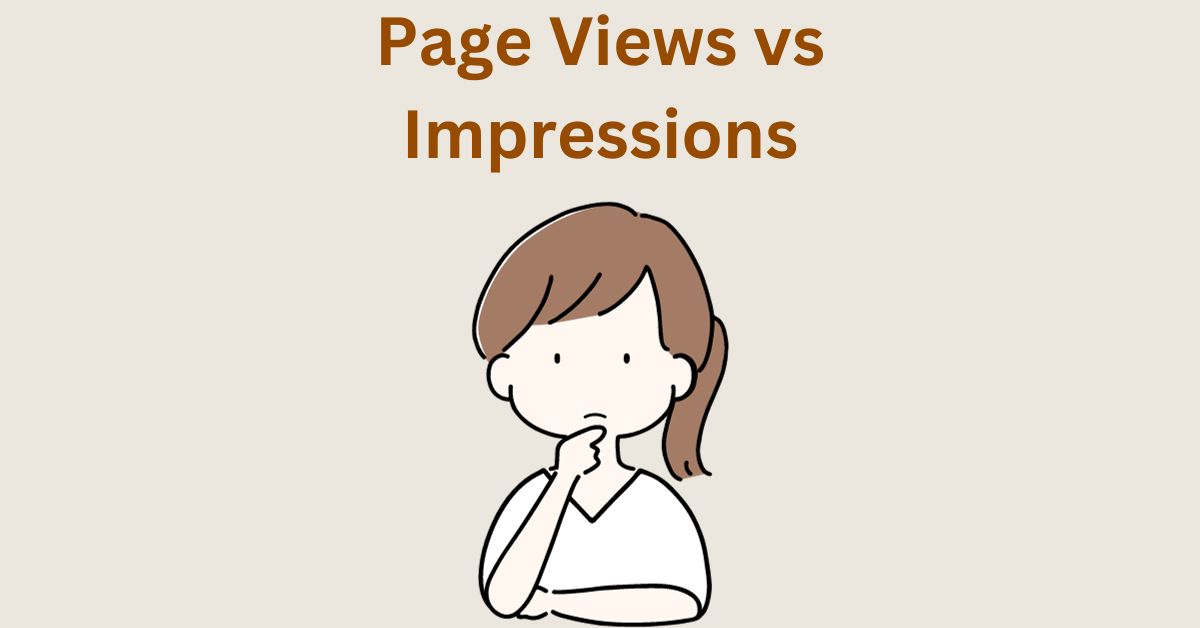Difference Between Page Views and Impressions
Estimated reading time: 4 minutes
Last updated on March 26th, 2024 at 07:01 am
Do you want to know about “Page Views vs Impressions”?
Imagine page views as the number of times someone opens a book to read it.
Similarly, a page view is counted each time someone opens a particular page on a website.
So, if a webpage gets 1000 visits in a day and each person views it twice, it counts as 2000 page views.
Impressions are like the number of times a book cover catches someone’s eye on a shelf.
In web terms, impressions refer to the number of times a webpage appears in search results or on a website, regardless of whether it’s clicked or not.
For instance, if your site shows up 500 times in search results, that’s 500 impressions.
Let’s talk in detail.
Page Views Vs Impressions
Understanding Page Views
Think of page views like the number of times people actually open and read a page on your website.
It’s like counting how many times someone flips through the pages of a book.
Did you know that websites globally get over 79 trillion page views per year?
That’s like everyone on Earth reading a lot of web pages every day!
Exploring Impressions
Now, impressions are like saying, “Hey, I’m here!” without knowing if someone read what you said.
It’s the number of times your content is shown, whether or not someone interacts with it.
It’s similar to how many times a billboard is seen by people passing by.
Over 7 trillion impressions are served on Google’s display network each month.
It’s like your website saying, “I exist” to a massive audience.
Key Differences between Page Views and Impressions
Imagine you have a book in a library.
If people open and read it (page views), you know they’re engaging with the content.
Impressions, on the other hand, are like people just walking past the book without picking it up.
The key difference is that page views measure actual interaction, while impressions measure potential visibility.
To put it in perspective, a webpage might get 1,000 impressions but only 100 page views, indicating that people saw it a lot but didn’t necessarily dive into the content.
Significance in Digital Marketing
Think of digital marketing like a big marketplace where everyone is trying to get attention.
Page views and impressions in this context are like the popularity indicators.
The more views and impressions your content gets, the more people notice your “stall” in the marketplace.
About 76% of marketers believe that page views are a crucial metric for measuring content marketing success.
It’s like everyone agreeing that if a lot of people check out your booth, your products or services are gaining attention.
Impact on Advertising Effectiveness
Now, let’s talk about advertising.
When you’re running an ad online, you want people to not just see it (impressions) but also take action (click, buy, or engage).
Imagine putting up a billboard – lots of people see it, but the real success is when they visit your store.
Similarly, a high number of impressions is good, but the click-through rate (actual interaction) is what tells you if your ad is effective.
A typical click-through rate for display ads is around 0.46%.
So, out of 1,000 people who see the ad (impressions), less than five might actually click on it (engagement).
This tells advertisers how compelling their ad is and if it’s resonating with the audience.
Wrapping Up – Page Views vs Impressions
When it comes to figuring out how well something is doing online, we have two main ways to measure it: page views and impressions.
Page views tell us how many times people have loaded and looked at a webpage.
It’s like counting how many times someone opens a book to read it.
Impressions, on the other hand, count every time a person sees a piece of content, whether they fully look at it or not.
It’s like noting how many times a book cover catches someone’s eye, even if they don’t read it.
Choosing between page views and impressions depends on what we want to know.
If we’re interested in how much people are engaging with our content, page views are useful.
For advertisers and content creators, this helps understand how popular their stuff is.
Impressions are handy for seeing how many times people could have seen our content, helping with brand awareness.
In the end, the best choice depends on what we’re trying to achieve online.
Balancing both page views and impressions, along with other relevant info, gives us a better overall picture of how things are going.
It’s like looking at different angles of a painting to really understand it.
